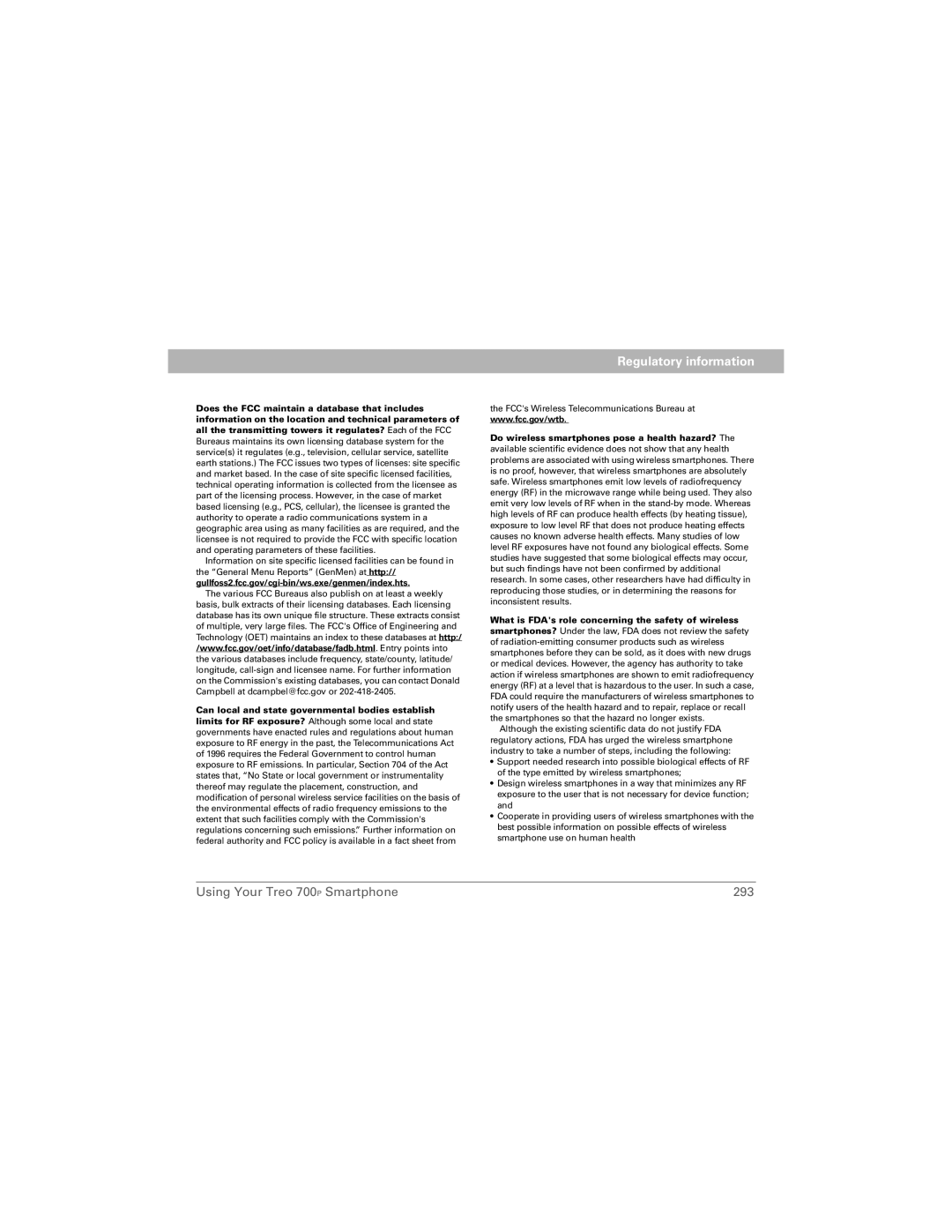
Regulatory information
Does the FCC maintain a database that includes information on the location and technical parameters of all the transmitting towers it regulates? Each of the FCC Bureaus maintains its own licensing database system for the service(s) it regulates (e.g., television, cellular service, satellite earth stations.) The FCC issues two types of licenses: site specific and market based. In the case of site specific licensed facilities, technical operating information is collected from the licensee as part of the licensing process. However, in the case of market based licensing (e.g., PCS, cellular), the licensee is granted the authority to operate a radio communications system in a geographic area using as many facilities as are required, and the licensee is not required to provide the FCC with specific location and operating parameters of these facilities.
Information on site specific licensed facilities can be found in the “General Menu Reports” (GenMen) at http://
The various FCC Bureaus also publish on at least a weekly basis, bulk extracts of their licensing databases. Each licensing database has its own unique file structure. These extracts consist of multiple, very large files. The FCC's Office of Engineering and Technology (OET) maintains an index to these databases at http:/ /www.fcc.gov/oet/info/database/fadb.html. Entry points into the various databases include frequency, state/county, latitude/ longitude,
Can local and state governmental bodies establish
limits for RF exposure? Although some local and state governments have enacted rules and regulations about human exposure to RF energy in the past, the Telecommunications Act of 1996 requires the Federal Government to control human exposure to RF emissions. In particular, Section 704 of the Act states that, “No State or local government or instrumentality thereof may regulate the placement, construction, and modification of personal wireless service facilities on the basis of the environmental effects of radio frequency emissions to the extent that such facilities comply with the Commission's regulations concerning such emissions.” Further information on federal authority and FCC policy is available in a fact sheet from
the FCC's Wireless Telecommunications Bureau at www.fcc.gov/wtb.
Do wireless smartphones pose a health hazard? The available scientific evidence does not show that any health problems are associated with using wireless smartphones. There is no proof, however, that wireless smartphones are absolutely safe. Wireless smartphones emit low levels of radiofrequency energy (RF) in the microwave range while being used. They also emit very low levels of RF when in the
What is FDA's role concerning the safety of wireless smartphones? Under the law, FDA does not review the safety of
Although the existing scientific data do not justify FDA regulatory actions, FDA has urged the wireless smartphone industry to take a number of steps, including the following:
•Support needed research into possible biological effects of RF of the type emitted by wireless smartphones;
•Design wireless smartphones in a way that minimizes any RF exposure to the user that is not necessary for device function; and
•Cooperate in providing users of wireless smartphones with the best possible information on possible effects of wireless smartphone use on human health
Using Your Treo 700P Smartphone | 293 |
